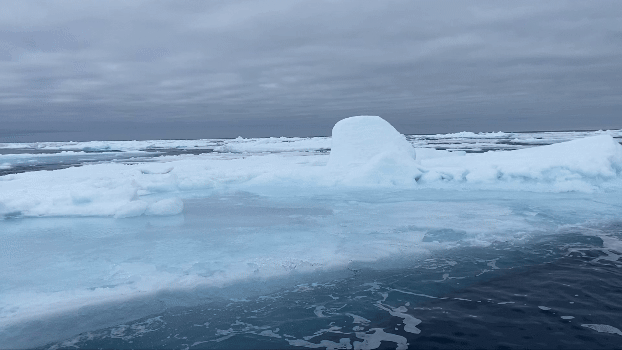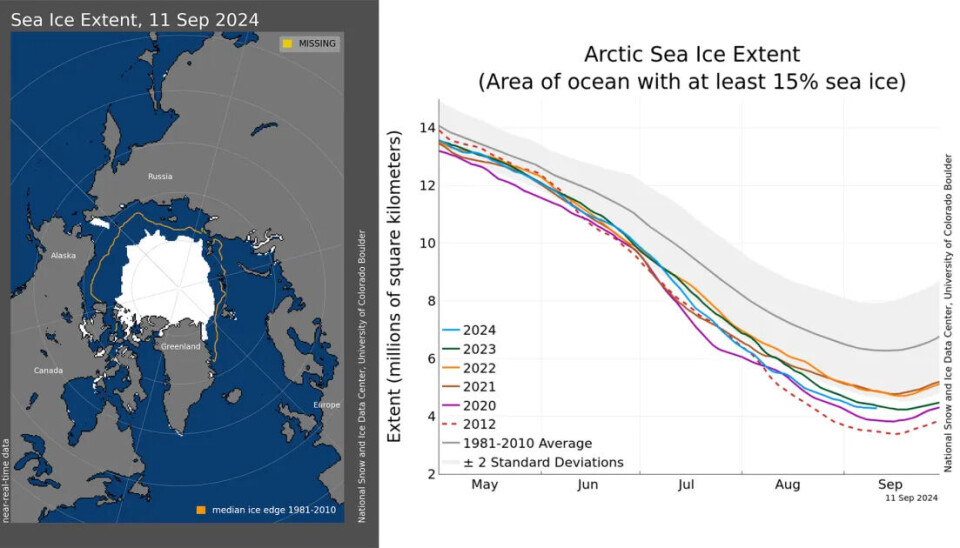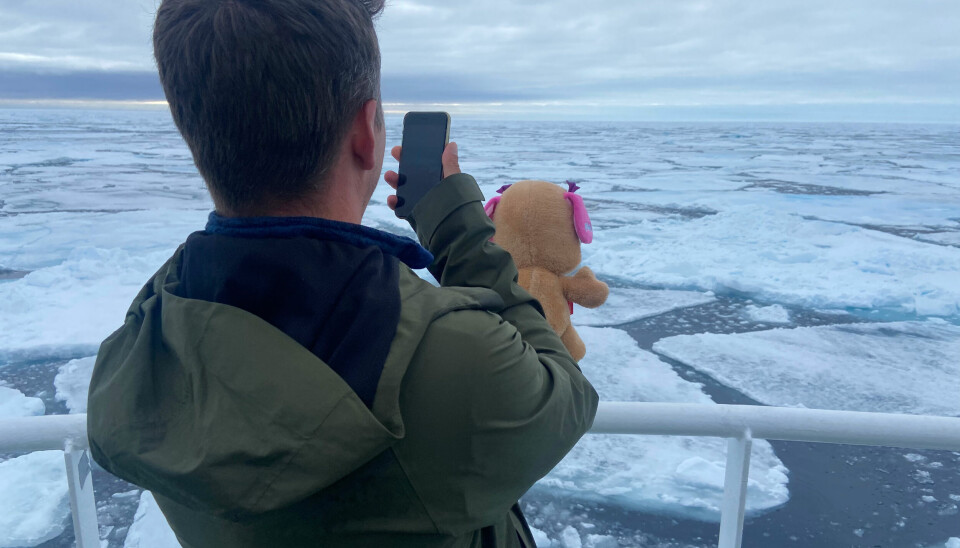
Melting Arctic sea-ice could have dramatic effect on ocean circulation
It has been a record warm summer here at 80 degrees North, off the coast of Svalbard in the Arctic Ocean. Enhanced melting of sea-ice can significantly change ocean circulation, causing lower temperatures across northern Europe, a new study warns.
The above video clip was filmed by the Barents Observer mid-summer this year, a few hours sailing north of Svalbard into the Arctic Ocean. Here, the ice edge can move fast at this time of the year depending on wind and currents.
The trend, however, is alarming. Arctic sea-ice is now shrinking at a rate of 12% per decade compared with the average extent during the time of satellite recordings, from 1981 till today.
Polar sea ice is at its minimum extent in September. After that, waters at the top of the planet start freezing again. Minimum sea ice coverage this year was estimated at 4,28 million square kilometres, slightly more than the 4,23 million sq. km. seen in 2023, but far below the 7,54 million sq. km. in 1981, according to the National Snow and Ice Data Centre with the University of Colorado Boulder.
To put that into perspective, it means the Arctic is losing sea-ice at a size similar to the country of Austria annually.

This summer was the third consecutive warmest summer on record at Svalbard. One temperature record after another was broken across the Arctic. In August, Longyearbyen for the first time ever measured above 20°C for the month.
Despite being the warmest summer ever recorded, the sea-ice extent this September was the seventh lowest in the more than 40-years of data records, NASA reported. Extent, however, is one of three key sea ice metrics, the others being the volume of the ice and the age of the ice.
NASA’s data show that there there is almost no four-year-old ice left in the Arctic. In the 1980's, the four-year-old ice constituted more than 30% of the sea ice. In 2024, about 60% of the ice was 0-1 years old. First year ice is much thinner, measuring from a few centimetres up to one metre, compared with multiple-year old ice which can be up to three metres thick. Thin ice naturally melts faster and might disappear fully during summer months.
The trend will eventually result in ice-free summer seasons, believed to become a reality by 2050.

A new study published in Nature Communications by scientists with the UiT - Arctic University of Norway, warns that warming climate in polar regions may significantly disrupt ocean circulation patterns. Looking at the distant past, the study documents how growing inflows of freshwater from melting Arctic sea-ice into the Nordic Seas likely affected ocean circulation, causing temperatures to drop across northern Europe.
Our finding that enhanced melting of Arctic sea-ice likely resulted in significant cooling on northern Europe in the earth’s past is alarming," says Mohamed Ezat from the iC3 Polar Research Hub.
He notes that this is a reminder that the planet’s climate is a delicate balance, easily disrupted by changes in temperature and ice cover.
Scientists are now sounding the alarm, warning that circulation change in the North Atlantic would have devastating and irreversible impacts.
Waters between Norway and Greenland are a key area for oceanic heat transport. It influences weather patterns far beyond the west Nordic region.
The study looked at the warming period over 100,000 years ago when Arctic sea-ice melted and how that affected regional sea-surface temperatures and ocean circulation. With melting ice at that time, the salinity and density of the water led to changes in circulation patterns and heat distribution.
In November, the United Nations next climate conference, COP29, kicks off in Baku, the capital of Azerbaijan. This year’s focus for world leaders is how to give more money to ramp up actions to reduce emissions of climate gases.
Phase out of fossil fuels and investing in renewable energy are the only solutions providing hope for the Arctic Ocean to remain ice-covered.
Right now, that goal seems like an unattainable dream.

















